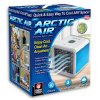Darr26
Member
They look fine for 31 days in soil. That they look so squat is due to the high proportion of blue light. That changes when you shorten the day length to 12/12h in a few weeks.
450w true watt would be "way" to much for a 2x 2', but as far as I know one Mars300 is only 180w at the wall and the small 150w one is maybe only 70-100w or so. I would buy a 10$ kill-a-watt meter or another wall watt meter from walmart.
200wall watts blurple (or ~50w/sft) should be more than enough for a 2x 2' area. You have already 250-280wall watts!
What's the distance to the lights currently? It could be neccessary to keep them 20-24" above the canopy to avoid damage. Temps should be near 30°C/85°F with humidity just below 60% when lights on, and <50% when lights off.
Is there a way to disable the veg switch on one of the lamps? This would deactivate a few the unwanted blue diodes and would reduce the power a bit so you get closer to the 200w mentioned above.
Unfortunately there is no veg/bloom switch on these. The ufo 150watt which I think is 75 true watts seems to be more for bloom as it has more red. I believe the lights were to close. Around 14 inches from plant. I moved both to 24 inches. Also, my temps are consistent around 78-84. My humidity is an issue. It's between 20-35. The next step would be to invest in a humidifier? Thanks for the help!





